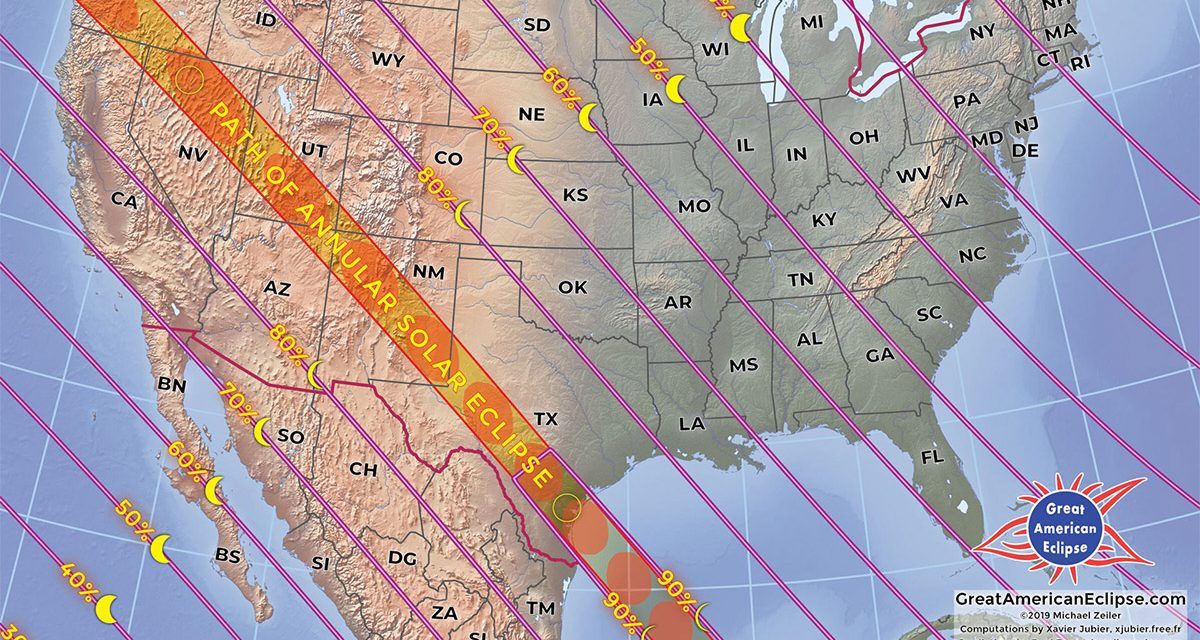A few times each year the sun, moon and Earth perform a cosmic lineup in space producing an eclipse. This year our planet will witness two solar and two lunar events. On Saturday, October 14, 2023, skywatchers along a path starting in Oregon through Nevada, Utah, New Mexico and ending in Texas, will see an annular eclipse of the sun. The rest of North America (depending on your geographic location) will see a partial eclipse with varying percentages of the sun covered by the moon.
Although this seems like an incredible event to view and photograph, it comes with great risk and danger. Unlike a lunar eclipse where the moon slides into the Earth’s shadow, turning a burnt orange, or coral colour and is completely safe to view, the sun is a far different story. Protective measures must be applied to prevent eye and camera damage.
Solar eclipses come in basically three flavours, total, annular and partial.
The first two are dictated by how far the moon is away from Earth at eclipse time. In its monthly orbit around our planet, the moon’s elliptical orbit causes an approximate 50,000-kilometre or 30,000-mile variance between the closest and farthest approach called perigee and apogee. The so-called “supermoon” is the combination of a full moon and the most relative distance to us which we experienced at the end of August with the “Blue Moon” or the second full moon in the same month.
On October 14, the moon will be farther from Earth and therefore not block the entire solar disk. The classic total eclipse is when the entire sun is completely covered for a few seconds up to a maximum of seven and a half minutes depending again on the moon’s distance in its orbit. Much like a hockey goaltender challenging a shooter as he skates out and retreats in the net.
Since at no point will the sun be safely covered by the moon, DO NOT LOOK DIRECTLY AT THE SUN without protective means.
Eclipses are an awe-inspiring wonder of nature that can be enjoyed safely.
Unless you have a certified solar filter or a number 14 welder’s glass which many of us do not possess, you can still safely see by items such as a vegetable strainer, spaghetti colander or anything with small holes, even a Ritz cracker. Holding up the strainer or cracker allows you to view little crescent suns on a sheet of paper in safety. For the photographers, Baader solar film or other solar filters are a must or you run the risk of melting your camera’s CCD chip or your cell phone sensor.
Gary has established a GoFundMe page with the aim of reconstructing his countryside observatory. The primary objective behind this endeavour is to elevate his astronomy outreach by live-streaming telescope images over the internet, a venture he’s coined ‘astrocasting.’ Through this platform, individuals can engage in Astronomy 101, asking questions and gaining insights into the cosmos. (To find out more on his website www.wondersofastronomy.com )








What’s your most memorable experience with an eclipse, and do you have any tips or stories to share about safely observing celestial events like this?